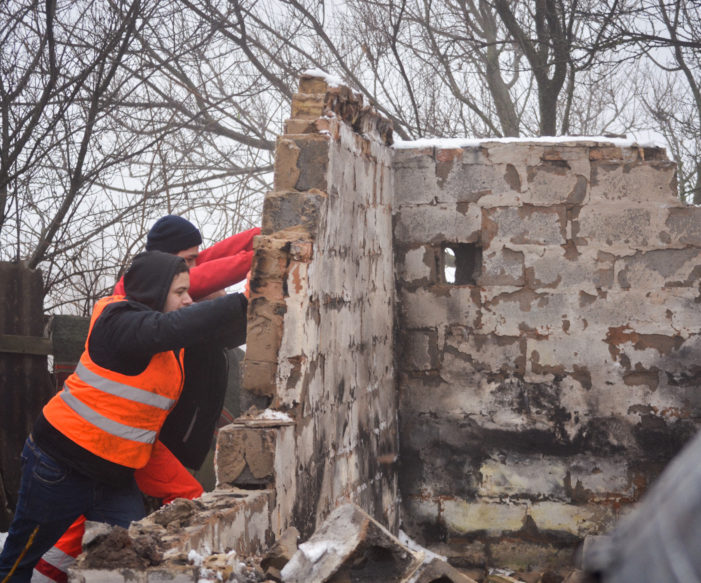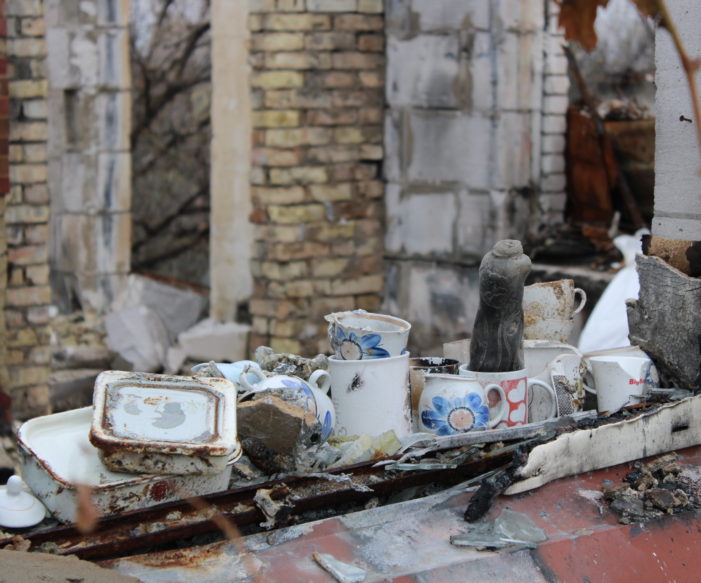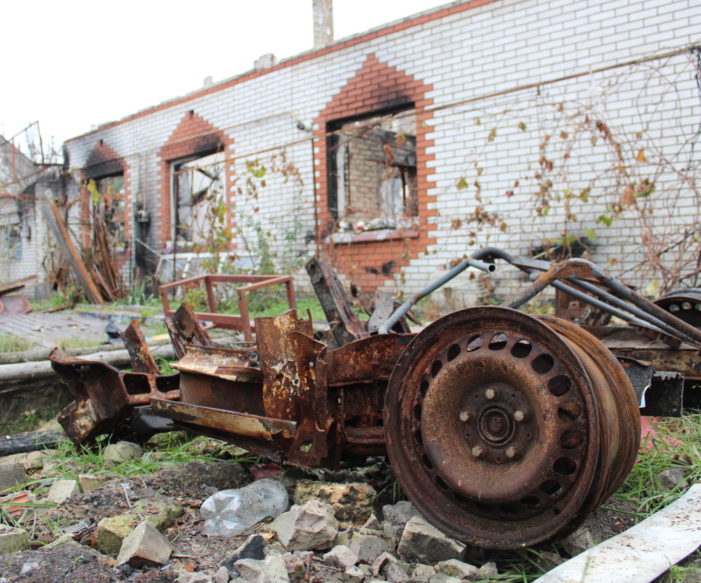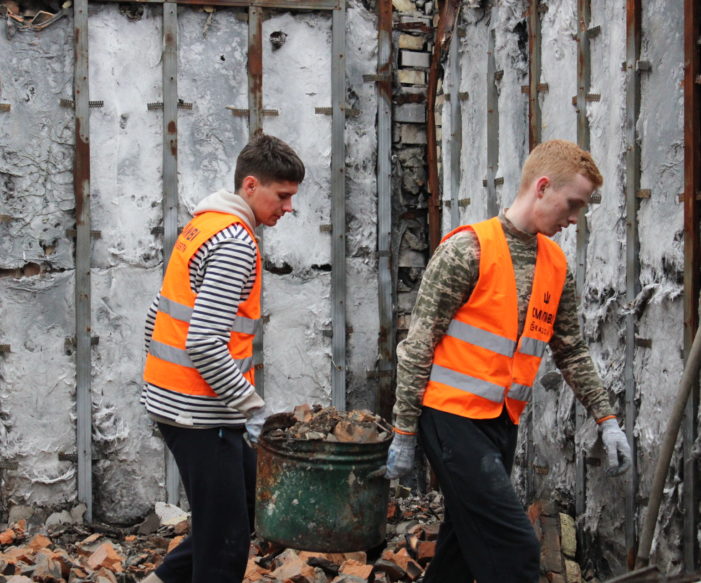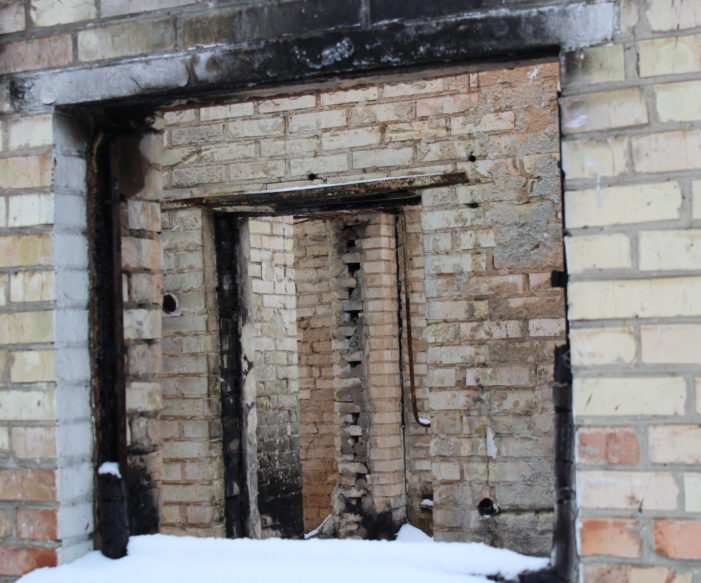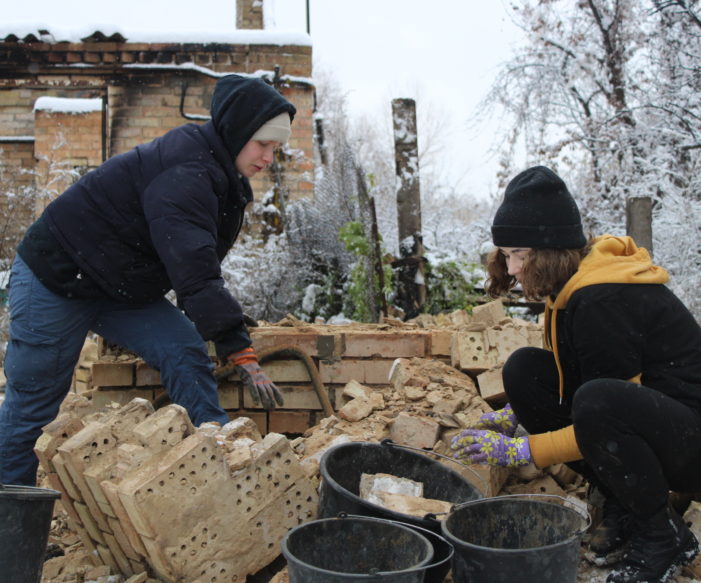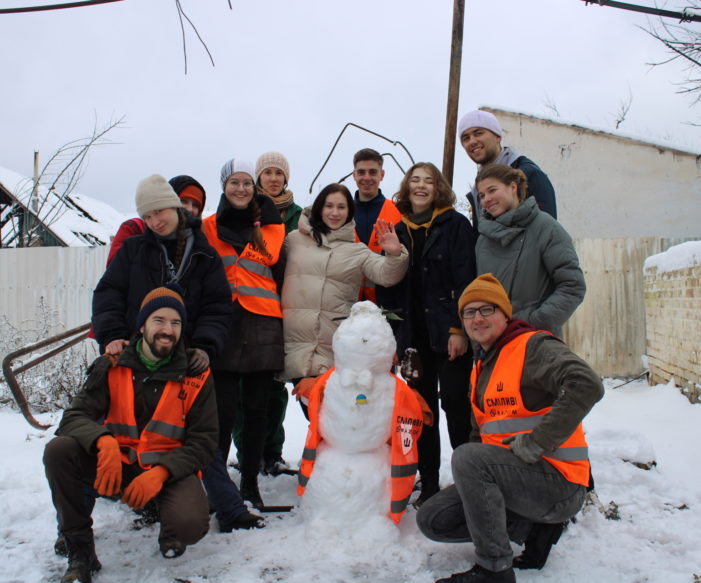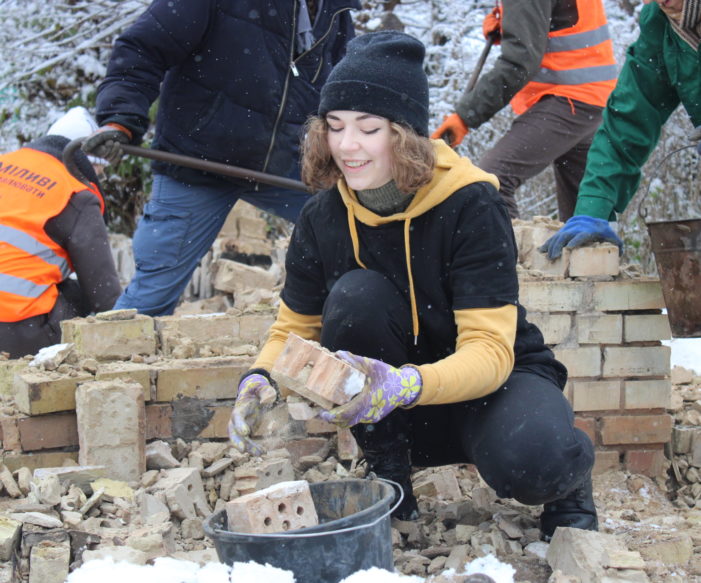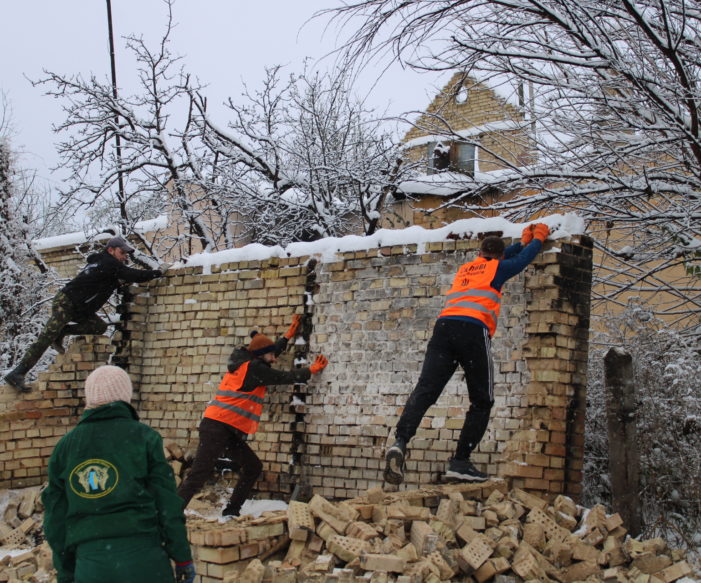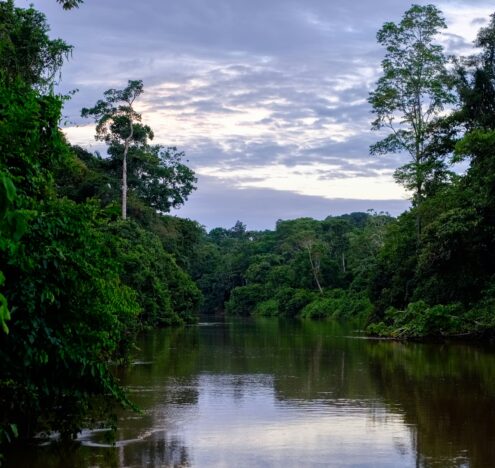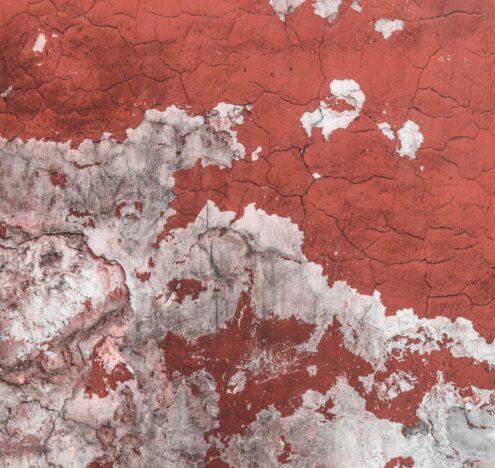“I remember my first time volunteering,” Zhenya told me, “We were driving toward our destination and being really loud on the bus. But the moment we entered Irpin, everyone got quiet. Through the windows, people stared at the ruins in front of them.”
She sighed.
“It may sound strange and sad, but I am already used to seeing destruction,” the girl added, “It no longer provokes very strong emotions in me as it used to.”
Zhenya Pohorila is a young adult, barely out of her teens. Originally from Kyiv, she has pink hair and a calm, comforting voice. Born and raised in independent Ukraine, she reminded me once again how Gen Z was making a difference in their home country.
Zhenya is a communication coordinator at Brave to Rebuild, a volunteer movement that grew from a dozen students into a mass organization that helps rebuild from the damage of the Russian occupation. I discovered Zhenya and her team by accident when I was looking for people regularly traveling to formerly occupied areas: Brave to Rebuild members were going every weekend, and sometimes, during the week too.
“The organization materialized in mid-May although at first, nobody planned to turn it into anything formal,” Zhenya said, “In the beginning, it was a meeting of eight people, who were friends and acquaintances. They were mostly graduates from Kyiv Mohyla Academy and Ukraine’s Leadership Academy.”
The eight friends simply wanted to help. When they gathered for the first time, it was one month after the Kyiv region was liberated. Volunteers went to the city without any contacts; they saw a damaged building, entered, and started asking locals whether they needed any help. After that, they decided to create a name, search for more volunteers, and expand.
In half a year, the team grew tremendously and now involves a few thousand volunteers who come whenever they want to help with cleaning the rubble and other activities. Most volunteering takes place in the Kyiv region, in the towns most damaged by Russians: Irpin, Borodyanka, Hostomel, and Bucha. The team plans to volunteer in other liberated areas and has already traveled to Kherson and Kharkiv regions, bringing humanitarian aid and generators there.
“Since mid-May, there wasn’t a single weekend when we didn’t volunteer,” Zhenya said, “Despite the cold, people still come, and not only on weekends. In addition, we have lots of foreign volunteers. People normally hear about us through word of mouth from friends who are already with us. That’s how I learned, too.”
“90% of our work is cleaning the rubble,” the girl continued. “Sometimes we help with construction when the owners already have some equipment, and we’re there to aid them.”
A few times, volunteers helped tear down entire houses or some walls or roofs. This activity is very popular and people call it “anti-stress.” However, the organization does not do a lot of construction work because the volunteers lack the skills for that. On a case-by-case basis, the team sometimes hires construction specialists they know to help locals.
“Our House Is Gone”
“When I arrive to these locations, I have to coordinate and organize volunteers, so I handle that quite unemotionally,” Zhenya reflected. “The realization that we’re cleaning what used to be someone’s house comes only later.”
“For me, the biggest trigger is seeing some nice tiles in what used to be someone’s kitchen or bathroom,” the volunteer continued. “That’s when I realize that this is the place where people would stand barefoot and make breakfast for their family during the weekend…I tried to get rid of these thoughts right away because it makes the work much more difficult. For many volunteers, the trigger is seeing nice plates and kitchen utensils that survived intact.”
“That’s when I realize that this is the place where people would stand barefoot and make breakfast for their family during the weekend…I tried to get rid of these thoughts right away because it makes the work much more difficult.”
According to Zhenya, volunteers often discover some things that survived the bombings while clearing the rubble in the house. For instance, once the team found some pretty glasses made out of crystal. The volunteers brought them to the homeowners who were very careful and gentle with these things. They wanted to save them from any damage. However, there are also homeowners who don’t feel the same attachment to their things anymore. Zhenya recalled a few locals telling her, “Destroy it and get rid of it. Our house is gone” whenever she’d bring them anything that was rescued from their former home. Homeowners are almost always there when volunteers arrive, and they work together to get rid of the rubble.
“Homeowners are very grateful,” Zhenya said, “It is very difficult when they show us the pictures of what their house looked like before the Russian invasion because all we see now is rubble. People are very sweet; they often feed us when we’re there. Volunteers joke that they want to go to the locations where homeowners feed them borsch.”
“I remember one time, we volunteered in Irpin, and a woman whose apartment was destroyed worked with us non-stop,” the girl added, “She said: ‘If I cry, it won’t help me. But if I help you, we can clean faster, and we can rebuild faster.’”
According to Zhenya, most locals she encountered were very optimistic, especially after seeing the number of volunteers who want to help perfect strangers and said, “This inspires them even though they are already very strong.” The girl added, “It is very sad to see what happened to these locals because they are very kind. I don’t understand why they had to endure that injustice.”
Residents often share stories about their destroyed houses. Some people finished reconstruction days before the invasion. Others stayed during the occupation even though their homes were destroyed because they were feeding dogs whose owners were killed.
“We get very affected when we see someone crying next to their house or telling us ‘This was my son’s room,’” Zhenya continued. “Right now, we are collecting money for a family that has a daughter who is two or three years old. Before the invasion, the family renewed the girl’s room and bought her a new princess bed. The little girl was telling everyone: ‘I used to have a princess bed, and I really liked it, but I don’t have it anymore.’ Of course, it is very difficult to hear that, but it motivates us to work better.”
The team launches fundraisers to help local people and shares their stories. Everything the organization buys is either crowdfunded or given to them for free, and volunteers also organize charity events to raise funds for people they encounter through volunteering. Those who cannot donate money give their time.
“People can donate to us via PayPal or other means, or join us as volunteers. It’s the best help,” Zhenya said.
“When people volunteer with us, they see their direct impact.” The girl continued, “When they arrive on location, all they see is a mountain of rocks, and in a few hours, they have 100 bags of trash with rubble. They understand that they did that, and it makes them feel better. This shows that their donations and volunteering go somewhere useful, and they feel happier about it.”
“Towns Are Coming Back To Life”
“Even though we clear the rubble inside the house, the damage is still there,” Zhenya said. “You see it whenever you walk the streets.”
However, locals are coming back in large numbers. Some are staying with their neighbors whose houses survived; others live in garages or commute daily from Kyiv. Cafeterias and public spaces are reopening too.
“People are covering the bullet holes in their houses because those were everywhere,” the girl said. “It feels strange seeing children running around those destroyed streets and realizing how quickly we accepted this reality. But the towns are coming back to life.”















